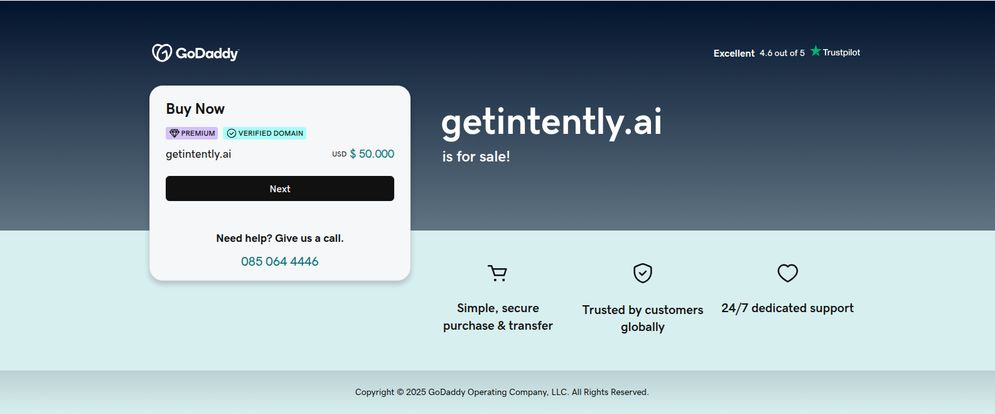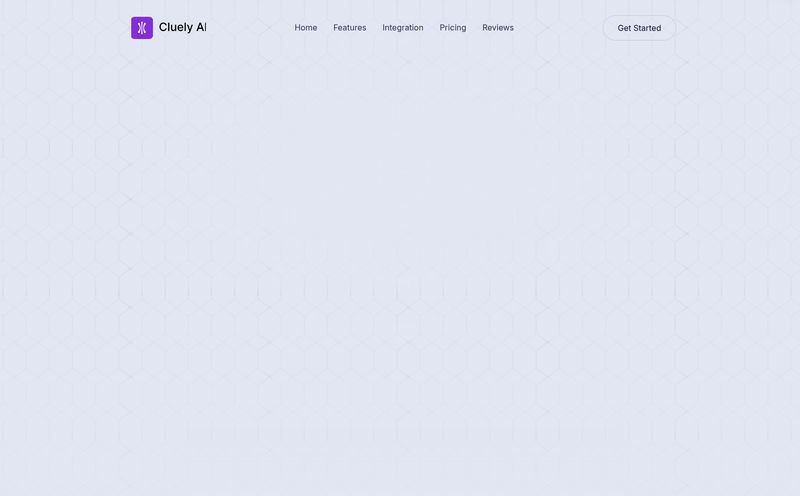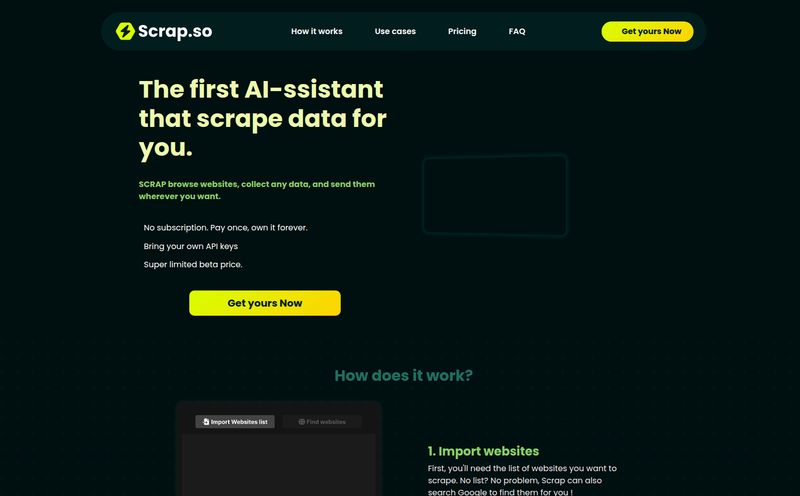You know how it is. You’re scrolling through your feed, maybe browsing Product Hunt or a niche Slack channel, and you see it. The Next Big Thing. Another AI-powered platform promising to solve all your problems, find all your leads, and probably make you a killer cup of coffee while it’s at it. I’ve been in this SEO and traffic gen game for years, and my BS detector is usually finely tuned. But every now and then, something comes along that genuinely makes you lean in a little closer.
For me, a little while back, that tool was Intently AI. The promises were… well, intense. AI-driven search through LinkedIn data? Automatic validation of your Ideal Customer Profile (ICP)? Look-alike audiences for B2B sales? My inner sales nerd was doing backflips.
This sounded like the holy grail. A tool to cut through the noise and deliver hot, ready-to-buy prospects right to your digital doorstep. So, naturally, I went to check it out. I typed `getintently.ai` into my browser, ready to be wowed. And I was wowed, just not in the way I expected.
The site wasn't a slick SaaS landing page. It was a GoDaddy listing. The domain was for sale. For $50,000.
Wait, what? A tool with that much promise, and the digital real estate is up for grabs? This is more than just a dead link; this is a digital ghost ship. So, what exactly was Intently supposed to be, and what does its disappearance tell us about the wild world of sales technology?
What Was the Dream of Intently AI?
Before we get to the autopsy, let's talk about the dream. Based on the digital breadcrumbs it left behind, Intently wasn't just another scraper. It was pitched as a sophisticated, all-in-one sales intelligence hub. Think of it as a super-powered command center for your entire prospecting and outreach process.
The core idea was to tap into a massive pool of data—we’re talking 500 million people and 40 million companies—from platforms we all use daily like LinkedIn, X (the platform formerly known as Twitter), and Facebook. It would then let you query that mountain of data using simple, natural language. No more wrestling with clunky Boolean searches on LinkedIn Sales Navigator.

Visit Intently
The Features That Made Me Drool a Little
The feature list read like a B2B marketer's letter to Santa. You had your AI-powered LinkedIn search, which was the main event. But then it layered on things like validating your ICP to make sure you were even chasing the right people in the first place. It could then find look-alike audiences, a concept every CPC manager knows from platforms like Facebook Ads, but applied to B2B prospecting. Genius. It also promised real-time tracking of prospect activity, so you could pounce at the perfect moment. It was all about getting intent-driven lists of prospects who were actually showing signs of being ready to talk. A real game-changer. Or so it seemed.
The Promise and The Peril of Such a Tool
Let's be real, even if Intently were fully operational today, it wouldn’t be without its challenges. Every powerful tool has a double edge.
The Obvious Upside
On one hand, the advantages are incredible. Having verified, multi-platform data in a single spot is a massive time-saver. I can't tell you how many hours I've lost cross-referencing a lead from LinkedIn with our CRM data and then trying to find their recent activity on Twitter. Consolidating that is a huge win. And the idea of getting ready-to-use lead lists, sculpted by AI to match your perfect customer? That moves a sales team from cold outreach to warm, informed conversations. It's the difference between shouting in a crowd and whispering in someone's ear.
The Inevitable Downsides
However, the potential pitfalls are just as significant. The biggest monster under the bed for any data platform is accuracy. As the old saying goes, garbage in, garbage out. If the data from LinkedIn or other sources is outdated or just plain wrong, the most brilliant AI in the world will just give you beautifully crafted, wrong answers. There's also the learning curve. Natural language queries sound great, but we've all argued with Siri or Alexa. Imagine trying to explain the nuance of your ideal customer to an AI that just isn't quite getting it. Frustrating, to say the least. The entire system's effectiveness hangs on the quality of its AI, which can often be a black box.
So, What Actually Happened to Intently AI? A Few Theories
This brings us back to the $50,000 question. Why is this supposedly game-changing platform’s domain sitting on a GoDaddy auction block? I have a few theories, based on years of watching startups rise and fall.
- The Acqui-hire: This is a common fate for promising tech. A bigger fish (think a major CRM or a data giant like ZoomInfo) saw the potential, bought the company for its team and underlying technology, and then shut down the original brand. The tech gets absorbed, the founders get a payday, and the brand becomes a footnote.
- Ran Out of Runway: Building and maintaining a platform that wrangles 500 million profiles is obscenely expensive. It requires massive server costs, constant API maintenance, and a top-tier engineering team. It's very possible they simply burned through their funding before they could become profitable. That domain sale could be an attempt to recoup a fraction of the losses.
- The Dreaded Pivot: The team might have realized their initial idea wasn't viable and pivoted to a completely different product under a new name, leaving the Intently brand behind.
- Vaporware: The cynical take. Was it ever a fully-fledged product? Or was it just a slick demo and a great pitch deck designed to attract investment that never came? It happens more often than you'd think.
A Lesson for All of Us in the Trenches
The story of Intently, whatever it may be, is a fantastic cautionary tale. For those of us looking to buy sales tech, it's a reminder to look beyond the flashy feature list. Is the company well-funded? Do they have real, happy customers? Is there a community around the product? Betting your entire quarter's sales pipeline on a brand-new, unproven tool can be a recipe for disaster.
And for the founders and builders out there, it’s a stark reminder that a brilliant idea is just the starting pistol. The real race is won through execution, go-to-market strategy, and building a sustainable business. A $50,000 GoDaddy listing is a pretty brutal epilogue for a startup story.
The Dream of Intently Lives On
Here’s the thing: even though Intently AI appears to be a ghost, the idea behind it is very much alive. The entire sales intelligence industry is racing towards this exact vision. Platforms like Apollo.io, Cognism, and others are integrating more and more AI features to predict buyer intent and surface the right leads at the right time. The desire for a smarter, more intuitive way to connect with customers hasn't gone anywhere.
Intently might have been a ship that sank, but it was pointing in the right direction. And I, for one, am still eagerly scanning the horizon for the vessel that finally reaches that shore.
Frequently Asked Questions about Intently AI
What was Intently AI?
Intently AI was a planned or early-stage sales intelligence platform designed to help B2B professionals find and validate prospects. It was supposed to use AI to search data from LinkedIn, X, and Facebook with natural language queries to accelerate sales cycles.
Why can't I access the Intently AI website?
As of late 2024, the domain for the platform, `getintently.ai`, is listed for sale on GoDaddy, indicating that the original project is no longer active or has been abandoned.
How much does the Intently AI domain cost?
The domain `getintently.ai` was listed for sale for $50,000 USD. This high price suggests the name itself is considered valuable, likely due to its relevance to the high-value 'sales intent' market.
Are there good alternatives to what Intently AI promised?
Yes, absolutely. The sales intelligence market is mature. Leading platforms like ZoomInfo, Apollo.io, and Cognism offer many of the features Intently promised, such as large contact databases, intent data, and tools for streamlining outreach.
What is AI-powered sales intelligence?
It's the use of artificial intelligence to analyze vast amounts of data to identify potential customers who are showing signs of purchase intent. This includes tracking company hiring, technology usage, website visits, and social media activity to score leads and predict who is most likely to buy.
Is LinkedIn data reliable for sales prospecting?
It can be, but with caveats. LinkedIn data is self-reported, meaning its accuracy depends on users keeping their profiles updated. It's a powerful starting point, but best practice is to always verify information through a secondary source or data enrichment tool before launching a major campaign.
Final Thoughts
The rise and apparent fall of Intently AI is a fascinating micro-drama in the tech world. It represents a brilliant, sought-after solution and a harsh business reality. While we may never know the full story, it serves as a powerful reminder that in the fast-paced world of SEO, sales, and technology, not every promising idea makes it to the finish line. But the pursuit of that idea is what keeps pushing the entire industry forward. And I'll keep watching.
Reference and Sources
- Domain Listing: GoDaddy (getintently.ai - may be inactive in the future)
- Example of a current Sales Intelligence Platform: Apollo.io
- Discussion on Startup Failures: TechCrunch - A look back at the startups we lost in 2023



